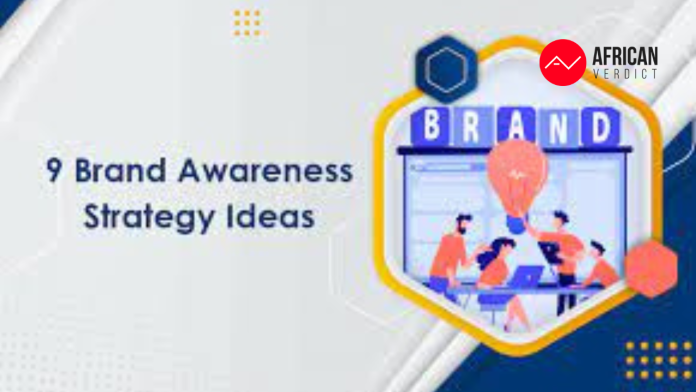In today’s crowded and competitive market, building brand awareness is critical for business success. A strong brand recognition strategy can set your company apart from the competition, helping to attract and retain customers. With the new year approaching, it’s time to start thinking about how you can boost your brand’s recognition in 2023.
In this blog post, we’ll share nine creative brand awareness strategy ideas to help you stand out in the crowd. These strategies will help you increase your brand’s visibility, build trust with your audience, and ultimately drive more business.
From creating compelling content to leveraging social media and influencer marketing, we’ll explore a range of tactics you can use to build brand recognition. We’ll also cover the importance of consistent branding, leveraging customer feedback, and creating unique experiences for your audience.
Whether you’re a small business just starting out or an established brand looking to take your marketing to the next level, these strategy ideas will help you connect with your target audience and grow your business. So, let’s dive in and explore how you can boost your brand’s recognition in 2023.
The Importance of Brand Recognition
So, what is the difference between building brand awareness and brand recognition? Brand awareness is the force that drives the entire narrative of your brand. Every digital branding agency will tell you that increasing brand awareness is key for your business.
Everything from your logo, slogan, and colors to your brand messaging and voice counts here.
There should be consistency and unity across all marketing channels, such as email, social media platforms, etc. so that you communicate with prospects in a way that resonates with them.
Over time, as you implement these brand awareness strategies, people will start to associate your brand with the products and services you provide.
Brand recognition is when your brand becomes synonymous with the service it provides.
Here are some fantastic examples of brand recognition, where each one of these brands has become a household name today:
- “Do you have any Tupperware for my leftover pizza?”
- “I’ve cut my finger on the lid, pass me a Kleenex”
- “Okay, it’s pretty bad, do you have a Band-Aid?”
- “I think I’m going to faint, Google the nearest doctor’s surgery.”
- “It’s an emergency, call an Uber!”
You get the picture.
Research into search engine marketing indicates that 82% of people will opt for a brand they are familiar with, even if that brand is ranked lower on the search engine results page.
3 Undeniable Benefits of a Brand Awareness Campaign
So, just what can a strong brand awareness campaign achieve? Yes, we know brand recognition is the ultimate goal, but what will that really do for your business?
Let’s take a closer look.
Increase Customer Recognition
People gravitate towards the familiar, and a good brand awareness strategy will help you forge that connection with your target audience.
Foster Customer Loyalty
When consumers start recognizing your brand and become acquainted with your products or services, they’ll soon begin following you. More people will begin to view you as a credible, professional business. A well-conceived brand or product awareness strategy fosters customer loyalty, and that helps your brand build a large, active customer base that makes your company more sustainable in the long run. This is why building brand awareness around loyalty is beneficial.
Stir Up Excitement for New Products
If Tony the Tiger appears on the screen, people tend to perk up as they know the brand already.
That makes it easier for Kellogg’s to launch a new twist on their beloved Frosties cereal.
When you have a brand awareness marketing strategy that plays to your strengths, it can be a great way to connect with more people, creating warm leads ahead of major product launches.
9 Brand Awareness Strategy Ideas for Small Businesses
So, now that you understand why you should have a brand awareness strategy, it’s time to look at some key ideas.
In this section, we’ll explore nine brand strategy ideas that companies have already used to build a great brand image.
#1. Partner with Other Known Brands
The Japanese clothing company Uniqlo doesn’t like to be pigeonholed. In an effort to spread the, they began sponsoring free admissions to the Museum of Modern Art in New York.
By doing this, the company pushes its brand name to a new audience and generates a buzz around its company through social media marketing, paid social networks, blog posts, guest posting, social media posts, and other content marketing channels.
Key Takeaway
Aligning yourself with a respected brand or business will help you inherit the image and reputation of that brand.
#2. Use Referrals
We’re sure you’ve heard of Dropbox. The free sharing and storage service is massively popular, and one of the reasons for that is their use of referral programs.
The company made it easy for its users to refer the service to friends and family via email or social media.
The incentive here was that you would get more space for every sign-up that you helped Dropbox acquire.
Digital marketing guru Neil Patel reports that this referral program strategy led to a 60% surge in sign-ups.
Key Takeaway
Think about how your products can leverage self-promotion.
#3: Launch Your Service as a Closed Beta Version
OptinMonster research found that more than 60% of millennials make reactive purchases because of the fear of missing out (FOMO).
So, how can this help you increase brand awareness and build brand recognition?
Well, you could take a leaf out of Evernote’s book. The collaborative notebook app launched a beta version a few months, encouraging people to send invitations for access to this new service.
The campaign worked, bringing over 120,000 sign-ups within a few months.
Key Takeaway
Sometimes exclusivity is the best way of evoking customer interest with brand awareness campaigns.
People want to feel special, and nobody likes the idea of missing out.
#4. Align Your Value Proposition With the Customers’ Needs
Today, personalization is paramount. It all starts with great audience personas, giving you a clear picture of what your potential customers actually want and need. Since different companies have different target audiences, it can be useful to take the help of experts, like Venture Smarter to create your marketing strategies.
By drilling down to find what is truly valuable to the people you are trying to serve, you can align your brand messaging to align your brand awareness marketing efforts with the potential and existing customers’ pain points. Major brands like Amazon and Netflix have nailed personalization by offering customers a tailored service, which caters directly to their desires.
Key Takeaway
Adopt a customer-centric approach with your strategy, and you will soon become a recognized solution for the problems of your target audience.
#5. Engage More People With Video Content
It’s not easy to stand out from the sea of competition.
Video marketing is on the rise because it is captivating in ways that text or images simply can’t be.
Research shows that adding a video to your landing page can boost conversions by as much as 80%.
#6. Offer a Freemium Service
Over the past few years, the software-as-a-service (SaaS) industry has skyrocketed. Many brands in this space have built brand awareness efforts by offering a freemium service.
Companies got their brand name out there by offering a free-forever, restricted version of their product.
Slack did this to great effect, and the free service stoked the fires enough to convince many consumers to buy the full premium service eventually.
In fact, the strategy worked so well that Slack achieved 30% conversion rates on its freemium users.
#7. Harness Social Proof to Persuade More People
Most consumers trust the opinions of friends and family members and actively consult them prior to making a purchase.
People care about the customer experiences and opinions of others and place more value on those than they do on the word of a company.
When you see positive reviews on a website, it influences your decisions, right?
Yelp is a popular recommendation site that took humanization to a new level by allowing users to create their own profiles. This put a face to the names and nurtured a community, making reviews even more trustworthy and improving public relations.
#8. Follow-Up with Remarketing
Do you know how online advertising and marketing strategies work?
The customer journey involves quite a few steps:
- A consumer needs a certain product or service.
- They search for solutions online, evaluating the available choices.
- They hesitate and decide against taking any action.
- They continue to research their options. They start to narrow things down, focusing on a few options that they trust or gravitate towards for some reason.
- Finally, they revert to the brand they favor most before converting.
Many companies miss out on the fact that the majority of consumers hesitate. As little as 2% of people are prepared to buy on their first visit to a website.
If you can follow up with people after they express some interest, you can maximize your conversion rates.
#9. Narrow Your Focus with Account-Based Marketing
The case for aligning your sales and marketing departments is overwhelming: it can deliver a nice 209% growth in revenue.
Account-based marketing seeks to coordinate the activities of these two teams so that you can drive tangible results in a more efficient, cost-effective way.



